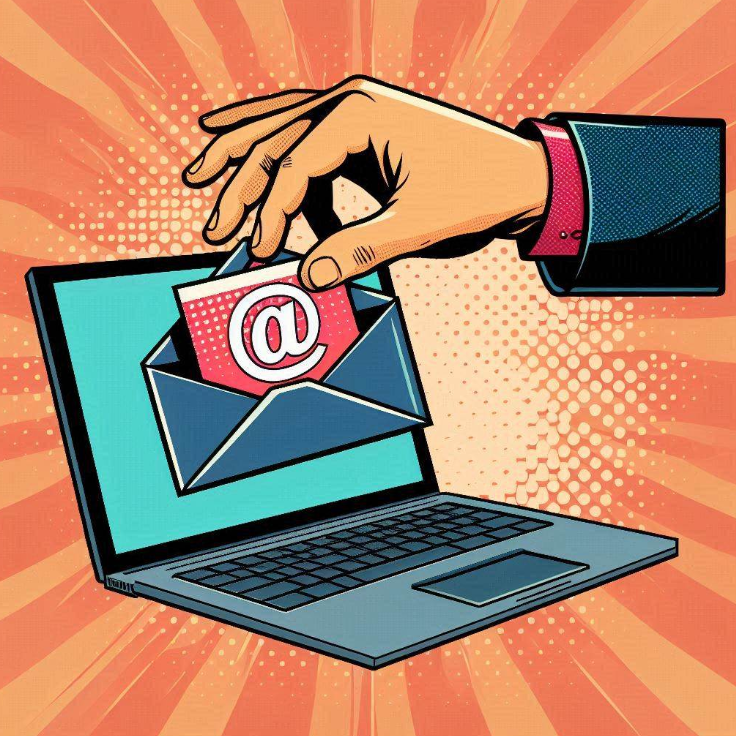- Why Save Emails to PDF?
- Converting Email to PDF on the Desktop
- Saving Emails to PDF on Mobile
- Next Steps
- FAQ: How to Save an Email as a PDF
Emails are more than just a one-shot communication tool.
Your email client serves daily as a growing repository of important information and attachments. They’re quite valuable.
You need access to your emails and the ability to share them. But it’s often difficult and awkward to manage them.
What to do? Well, changing their format is often helpful.
This article recommends converting your most important emails to PDF (Portable Document Format).
We’ll discuss why you might want to do this. I’ll also provide tips for both desktop and mobile users.
Ready?
Why Save Emails to PDF?
Keeping untold numbers of emails in your inbox or email-client folders is a poor way to archive information that you may need to access someday. This is especially true if you must securely pass the information along on demand.
- Converting emails to PDFs creates an archivable file that can be password protected.
- Formatting and layout of the emails are maintained. The content must also be uneditable, which is essential if it is to be used in any legal scenario.
- PDFs are compatible with virtually all devices.
- You can access a PDF offline without any complicated apps or tools.
- Sharing a PDF is typically easier and less messy than forwarding emails, especially when you want to include multiple email threads in one document.
Converting Email to PDF on the Desktop
Using Gmail
- Log into your Gmail account and open the email you wish to convert.
- Click the three dots (ellipsis) in the upper-right corner of the email window to open the menu. Select “Print.”
- In the print preview screen, change the printer destination to “Save as PDF.”
- Adjust the layout and margins as desired, then click “Save.”
- Choose the location on your computer where you want the PDF saved.
Using Microsoft Outlook
- Open your Outlook app and select the email you want to convert.
- Click on ‘File’ in the top menu
- Select ‘Print,’ then choose “Print Options.”
- In the Printer dropdown, select “Microsoft Print to PDF.” Click ‘Print’
- Name your file and choose a save location.
Using Apple Mail
- From your Apple Mail client, navigate to the email you want to convert.
- Click on ‘File’ in the menu bar.
- Select ‘Export as PDF.’
- Choose where you want to save the PDF on your Mac.
Saving Emails to PDF on Mobile
Converting emails to PDFs on mobile devices is quite similar to the desktop procedures. The options might appear differently depending on whether you use iOS or Android.
Depending on your email app, you may also see some differences.
iOS (iPhone and iPad)
- Find and open the email you want.
- Tap on the reply button, then select “Print.”
- If you wish, use the pinch-out gesture on the print preview window to open it in full screen.
- Tap the share icon.
- Save the email as a PDF in your chosen location.
Android
- Open the email you want to save.
- Tap on the three dots (ellipsis) to open the menu.
- Select ‘Print.’
- Choose ‘Save as PDF’ from the drop-down menu at the top.
- Tap on the blue PDF download button to save your file.
18 Tips for Efficient PDF Conversion
Here is an abundance of tips for you to contemplate when converting your emails to PDF.
- Opt for high-quality settings if the document contains images or complex layouts.
- For large file-sized PDFs (rare with emails), use PDF compression to reduce file size without significant loss of quality.
- Embed all standard and special fonts within the PDF to ensure the document displays correctly.
- If file size is an issue, convert and compress all images in the email before converting.
- Make sure that all hyperlinks in the original email are active and correctly linked within the PDF.
- Preview the PDF to check layout and content accuracy before finalizing the conversion. It is difficult to change after it is a PDF.
- If you are archiving emails to PDF, convert documents to the PDF/A option. This is an ISO-standardized version of PDF designed for long-term preservation.
- To protect sensitive or proprietary information, password-protect the PDF file after converting.
- To maintain accurate colors in the PDF, adjust the PDF settings to match the source document’s color profile.
- To ensure your documents retain their original layout and formatting, use a Text to PDF Tool for a quick and efficient way to convert your emails into professional-quality PDFs.
- Use Optical Character Recognition (OCR) on scanned emails to make the text searchable and editable.
- consider using a script or automation tool for frequent or repeated conversions.
- Edit the email to remove unnecessary content or pages before conversion. You don’t need to archive every response over and over.
- Ensure all the information is complete and up-to-date before converting to PDF.
- Choose a conversion tool that suits your specific needs; some are better for images, others for text-heavy documents.
- Ensure the page orientation (portrait or landscape) is set correctly according to the email’s layout. Portrait is the standard setting, but use landscape if the page is wider than it is tall.
- To avoid visual distortion when adjusting images or page size, maintain the aspect ratio. The aspect ratio is the email’s width to height, typically in inches, mm, or pixels.
- Always check whether the PDF appears correctly on different devices and software.
- Keep track of different versions of documents as you convert and edit them. Some apps have versioning capabilities, such as Microsoft Word.
Next Steps
If you need to share a PDF with one or more people, the most efficient way is to host and share the PDF online.
Our low-cost automated hosting service, Tiiny.host, is the simplest way to host and share a PDF. You can share any PDF under 3MB for free.
Visit Tiiny.host’s home page.
- Give your sharing site a name.
- Drag and drop your PDF onto the home page.
- Sign in or sign up for a free account and click the button.
That’s it!
It doesn’t get any simpler than that.
We also offer password protection and other advanced features on our paid tiers, ranging in price from $5 to $31 per month.
Please contact us with any questions, comments, or requests. Our superb customer service people are ready to help you and answer your questions.
Visit Tiiny.host today and try us out for free.
FAQ: How to Save an Email as a PDF
What is the benefit of saving an email as a PDF?
Saving an email as a PDF helps preserve the original content and layout, provides better security options like password protection, and makes sharing and archiving critical communications easier.
Can I save an email as a PDF directly from my email client?
Yes, most modern email clients, including Gmail, Outlook, and Apple Mail, can save an email as a PDF directly through the print function.
Is it possible to include email attachments in the PDF file?
Attachments are not automatically included in the PDF when you save an email. You will need to save attachments separately and then combine them with the PDF if necessary.
Can I edit the PDF once it’s created from an email?
Yes, you can edit the PDF using PDF editing software. However, you’ll need a program that allows PDF editing, such as Adobe Acrobat or a free alternative.
What should I do if the ‘Save as PDF’ option is unavailable?
If ‘Save as PDF’ isn’t available, you can install a PDF printer driver or use an online converter to print to PDF from any application.



